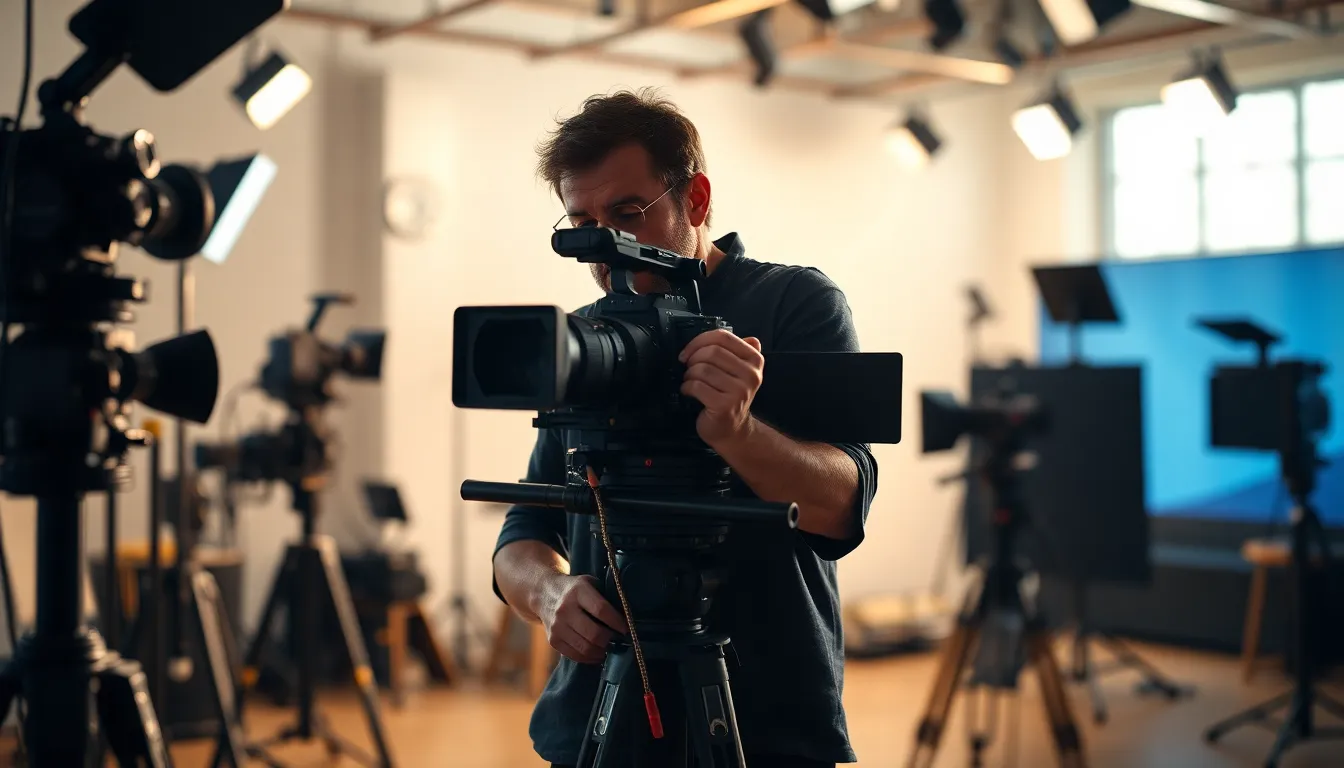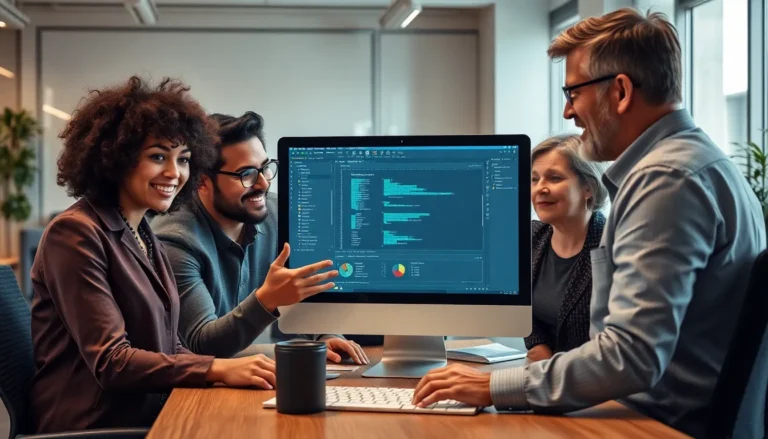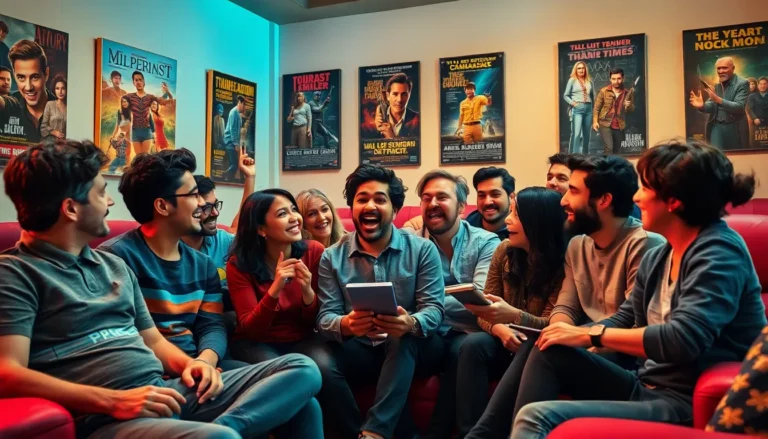Ever watched a movie and thought, “What on earth just happened?” Welcome to the world of movie dissection, where every plot twist and character choice gets the magnifying glass treatment. It’s like being a detective, but instead of solving crimes, he’s unraveling cinematic mysteries—complete with popcorn and a comfy couch.
Table of Contents
ToggleUnderstanding Movie Dissection
Movie dissection entails analyzing films to uncover plot intricacies and character motivations. This practice enhances the viewing experience and fosters a deeper appreciation for storytelling techniques.
Definition and Purpose
Movie dissection refers to the careful examination of a film’s elements. It explores themes, character arcs, and visual styles. By dissecting movies, viewers identify underlying messages and motivations. The purpose lies in enriching the understanding of cinematic art. This method invites viewers to engage more thoroughly with narratives, elevating passive viewing to active analysis.
Importance in Film Analysis
Film analysis benefits significantly from the dissection process. Viewers gain insights into filmmakers’ choices, enhancing discussions about techniques and storytelling. Understanding subtext becomes easier through this analytical lens. It fosters critical thinking by prompting viewers to question why characters act in specific ways. Appreciation of cinematography, editing, and sound design deepens with detailed scrutiny. Ultimately, the importance of movie dissection lies in its ability to transform a casual watch into an enlightening experience.
Key Elements of Movie Dissection

Analyzing the key elements of a film reveals its core components and enhances appreciation for storytelling. These elements include narrative structure, character development, and cinematic techniques.
Narrative Structure
Narrative structure defines the framework of a film. It often follows a traditional arc comprising exposition, rising action, climax, falling action, and resolution. Through this structure, filmmakers guide viewers through the plot and build emotional investment. Analyzing how a story unfolds provides insight into pacing and tension. For example, non-linear storytelling can create suspense by withholding information. Viewers might notice how flashbacks or multiple timelines enhance character depth. Identifying these structural choices reveals the thought process behind effective storytelling and engages the audience on a deeper level.
Character Development
Character development focuses on how characters evolve throughout the film. A well-crafted character arc showcases growth, conflict, and resolution. Viewers observe shifts in motivations and relationships as the story progresses. For instance, protagonists may face challenges that force them to confront their flaws. Analyzing character choices unveils underlying themes and emotional resonances. Supporting characters also play crucial roles in reflecting or contrasting the protagonist’s journey. By examining this dynamic, viewers gain a comprehensive understanding of each character’s significance. Identifying motivations and conflicts helps illuminate the narrative’s emotional core.
Cinematic Techniques
Cinematic techniques encompass the visual and auditory elements that shape a film’s style. Techniques such as camera angles, lighting, and sound design contribute to the overall atmosphere. For instance, a close-up might emphasize a character’s emotions while low-key lighting can create suspense. Analyzing these choices helps viewers understand how filmmakers evoke specific feelings. Editing also plays a pivotal role in pacing and narrative clarity. Techniques like cross-cutting can intensify dramatic tension. By studying how these elements interact, individuals gain valuable insights into the artistry of filmmaking. Identifying these techniques reveals the intention behind every frame.
Methods of Movie Dissection
Effective movie dissection employs several methods to analyze films in depth.
Scene-by-Scene Analysis
Scene-by-scene analysis breaks down a film into individual segments. Each scene’s purpose is examined to understand its contribution to the overall narrative. This method highlights key developments, character interactions, and plot twists that drive the story forward. Decisions made within scenes often reveal director choices and thematic elements. By scrutinizing dialogue and interactions, viewers identify critical emotional beats essential for character arcs. Focusing on pacing and transitions enhances comprehension of narrative flow. This detailed approach transforms each viewing into a more informative experience, fostering a deeper connection to the film.
Thematic Exploration
Thematic exploration investigates the underlying messages within films. Themes often reflect societal issues, moral dilemmas, or personal conflicts intrinsic to the story. Identifying recurring motifs and symbols enables viewers to uncover layers of meaning that may not initially appear. Each thematic element enriches character motivations and plot progression. By contrasting major themes against visual styles, viewers can observe effective storytelling techniques. This exploration allows for a greater appreciation of filmmakers’ intentions. Engaging with themes encourages critical thought, opening up discussions about the relevance of a film’s message in contemporary contexts.
Visual and Auditory Components
Visual and auditory components play a crucial role in film storytelling. Analyzing cinematography reveals how camera angles, lighting, and color palettes influence viewer perception. Each visual choice impacts emotional responses and enhances scenes’ dramatic effect. Sound design, including scores and sound effects, adds depth and mood, reinforcing the narrative’s emotional landscape. Observing these components helps viewers appreciate the technical artistry involved in filmmaking. This combined analysis of visuals and sound fosters a comprehensive understanding of how filmmakers convey messages effectively. Engaging with these elements transforms passive observation into an immersive experience.
Benefits of Movie Dissection
Movie dissection offers numerous advantages for viewers seeking a deeper understanding of films. Engaging with movies on this level elevates the viewing experience significantly.
Enhancing Critical Thinking
Critical thinking flourishes through analyzing plotlines and character motivations. Viewers develop analytical skills as they dissect each scene and uncover narrative layers. Questions arise during the viewing process, prompting reflections on character choices and thematic significance. Discussion surrounding these insights further sharpens reasoning abilities. Group discussions can reveal diverse interpretations, enriching the overall analysis. By honing critical thinking, individuals become more adept at evaluating other media forms.
Fostering Appreciation for Filmmaking
Film dissection cultivates a genuine appreciation for the artistry behind filmmaking. Observing cinematography, sound design, and editing techniques highlights the meticulous work involved in producing a film. Recognition of deliberate choices made by filmmakers enhances understanding of storytelling. Analyzing techniques like camera angles and lighting elevates viewers’ awareness of visual storytelling. Engagement with the underlying craftsmanship transforms passive watchers into informed audiences. Increased appreciation of filmmaking leads to a greater enjoyment of the cinematic art form.
Movie dissection transforms the act of watching into a rich and engaging experience. By diving deep into narrative structures character development and cinematic techniques viewers uncover layers of meaning that often go unnoticed. This analytical approach not only enhances understanding but also fosters a profound appreciation for the art of filmmaking.
As audiences embrace this practice they become more than just spectators. They evolve into active participants in the storytelling process. Through thoughtful analysis and discussion they cultivate critical thinking skills and develop a deeper connection to the films they love. Ultimately movie dissection enriches the cinematic journey making each viewing an opportunity for discovery and insight.




